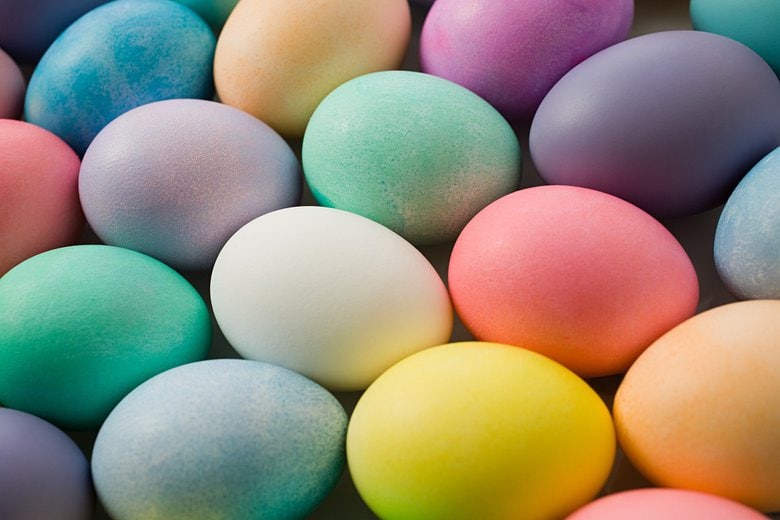by freelance writer Riley Herder
With Easter right around the corner, it’s the perfect time to plan your egg decorating. But before you pull out the usual box of dyes, consider switching it up this year and using all-natural plant-based dyes working with produce you already have lying around.
Traditional dyes may be richer in colour, but they can contain harsh chemicals. Plus, creating dyes from produce is a great learning experience for kids. They may really enjoy getting creative and trying to come up with colours of their own by combining different ingredients. The options are endless…
1. Choose Your Colours
To begin, pick a handful of basic colours. There are numerous plants and spices you can make lovely dyes from, but here are some of the most effective ingredients to use:
- Purple: Red cabbage yields a beautiful reddish purple, while you can use grape juice for a truer purple shade.
- Blue: blueberries (especially frozen ones)
- Red: beets or cranberries/cranberry juice
- Yellow: turmeric
- Green: spinach
- Brown: tea or coffee
- Orange: orange juice
2. Make the Dyes
Fill a medium saucepan with 1 litre of water and 1 tablespoon of distilled white vinegar. Add in your ingredients. If using solid fruits or vegetables, aim for 1 to 2 cups. For spices or juice, not quite as much should be needed. Bring the mixture to a boil, and then reduce to a simmer for 15 minutes. Turn off heat and set it aside to cool.
3. Colour the Eggs
Be sure to use only white eggs, as the darker ones will not show colour very well. Boil your eggs for about 10 minutes, and then submerge them in cold water to cool them off.
When both the eggs and the dyes are cool enough to handle, you can dip the eggs to make the patterns and colour combinations you desire. If you are used to traditional dyes, please note that it may take a little longer for the eggs to accept the colour of these plant-based dyes.
Have fun and a happy Easter!
Looking for some help in your garden or household? Find a housekeeper now.
